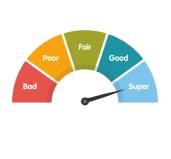Special Offers




Special Offers




15-Sep-2025 | Union Budget

In a country where property transactions can often be complex and time-consuming, the government of Rajasthan has taken a revolutionary step towards a more transparent and efficient system. The E-panjiyan portal, an initiative of the Inspector-General of Registration and Stamps (IGRS) of Rajasthan, has digitized the entire process of property registration, making it accessible to every citizen from the comfort of their home. This platform is much more than just a website; it’s a one-stop solution for all property-related documentation, from valuation to final registration.
If you’ve ever wondered how to do E-panjiyan, this guide is for you. We will walk you through the process of E-panjiyan, explore the key services it offers, and explain why E-panjiyan is necessary for a modern property transaction in Rajasthan.
What is E-panjiyan?
At its core, E-panjiyan is a digital platform created by the Inspector-General of Registration and Stamps (IGRS) of Rajasthan. Its primary purpose is to oversee and record all property transaction taxes, including buying and selling. The system is a digital record keeper, ensuring that every property transaction in the state, as per the Rajasthan Registration Act of 1955, is officially registered and documented.
The mission of IGRS Rajasthan, through this portal, is to establish a system that is efficient, transparent, and user-friendly. It not only streamlines the complex process of property registration but also plays a significant role in generating revenue for the Rajasthan government through stamp duty and registration fees. In essence, it replaces the traditional, paperwork-heavy system with a streamlined online process that benefits everyone involved.
Why E-panjiyan Is Necessary
In the past, the process of registering a property was often a frustrating ordeal involving multiple visits to government offices, long waiting times, and a significant amount of paperwork. The E-panjiyan portal has been created to solve these very problems.
Here are the key reasons why E-panjiyan is necessary for a modern property transaction:
· Increased Transparency: The platform provides a clear, documented record of every step of the transaction, from property valuation to payment and final registration. This reduces the chances of fraud and ensures all parties are aware of the legal standing of the property.
· Time and Cost Savings: By allowing you to complete most of the process online—including checking property values, paying fees, and booking appointments—the portal saves you considerable time and effort. This minimizes the need for multiple physical visits and reduces associated costs.
· Convenience and Accessibility: All information and services are available on a single portal, accessible 24/7. This means you can manage your property documentation from the comfort of your home, at a time that suits you.
· Efficiency: The digital system streamlines the entire workflow. Features like auto-generation of deeds for various document types (e.g., sale deed, donation deed) and faster data verification at the SRO office have made the process remarkably quicker.
How to Do E-panjiyan: A Step-by-Step Guide
The process of E-panjiyan can be broken down into a few simple stages. Follow these steps involved in E-panjiyan to ensure a smooth and successful property registration.
Step 1: Property Valuation and Document Preparation
The first crucial step is to determine the correct value of your property, which is essential for calculating stamp duty and registration fees.
· Visit the official E-panjiyan portal.
· Under the 'Information Service' menu, click 'Property Valuation for Citizen'.
· Enter your district, mobile number, and captcha code for verification.
· Choose 'Fresh valuation' and provide accurate details about your property, including location, type, and area.
· The website will display the property's measured value, which you can save for your records.
Step 2: Online Payment and Document Upload
Once you have the property valuation, you can proceed to the payment and documentation part of the E-panjiyan process.
· After the valuation, click 'Next' to go to the E-stamp page.
· Choose an execution date and face value, then click 'Calculate Stamp Duty'.
· The page will display all the charges you need to pay, including stamp duty and registration fees.
· Click 'Save' and proceed to the 'Party Details' section. You'll need to provide information about the presenter, parties involved, and upload all the required documents in PDF format.
· The required documents for property registration include a copy of the sale deed, identity proofs (PAN card, Aadhaar), photographs, a no-objection certificate, and a property map plan.
· After uploading, click 'Done and Exit'. You will be redirected to the e-GRAS payment gateway to make the payment.
Step 3: Booking an Appointment and Final Verification
This is the final stage where you complete the registration at the Sub-Registrar's Office (SRO).
· Once your payment is successful, the application will be automatically sent to the E-panjiyan website.
· You will receive a Citizen Reference Number (CRN) and an OTP on your registered mobile number.
· Go back to the E-panjiyan portal to book a time slot for your physical visit to the SRO office.
· On the day of your appointment, visit the SRO office with all your original documents. Provide the CRN and the OTP to the official.
· The official will verify your data and documents. After a successful verification, the signature or thumb impression of all parties will be taken to complete the process.
This concludes the property registration. The entire journey, from valuation to final registration, is streamlined to ensure a smooth and transparent experience.
Other Key Services on E-panjiyan
The E-panjiyan portal offers a wide range of services beyond just property registration, making it a comprehensive tool for citizens:
· DLC Rate Information: You can easily check the District Level Committee (DLC) rates—the minimum value for property sale registration—for any urban or rural area in Rajasthan.
· Document Status Tracking: You can track the status of your document or application by simply entering your CRN or document serial number on the portal.
· E-Stamp Verification: The portal allows you to verify the authenticity of E-stamps by entering the certificate number and other details.
· Grievance Redressal: If you face any issues, you can lodge a complaint through the Rajasthan Sampark portal, which is linked to E-panjiyan, and track its status online.
· Online Appointments: The online appointment booking system ensures that you don't have to wait in long queues at the SRO, saving you time and hassle.
Latest Updates on E-panjiyan
The E-panjiyan portal is continuously evolving to better serve the citizens of Rajasthan. Recent updates include:
· Automatic Deed Generation: A new system has been implemented for the automatic preparation of property registration deeds for sale, donation, lease, and rent. This simplifies the process by reducing manual effort.
· DLC Rate Updates: From April 1, 2024, the DLC rate in Jaipur has been increased by 10%, directly impacting stamp duty and registration charges.
The E-panjiyan Rajasthan portal is a user-friendly initiative that brings seamless property transaction-related services to the citizens' fingertips. It is a significant step towards achieving the vision of a digital and transparent India.